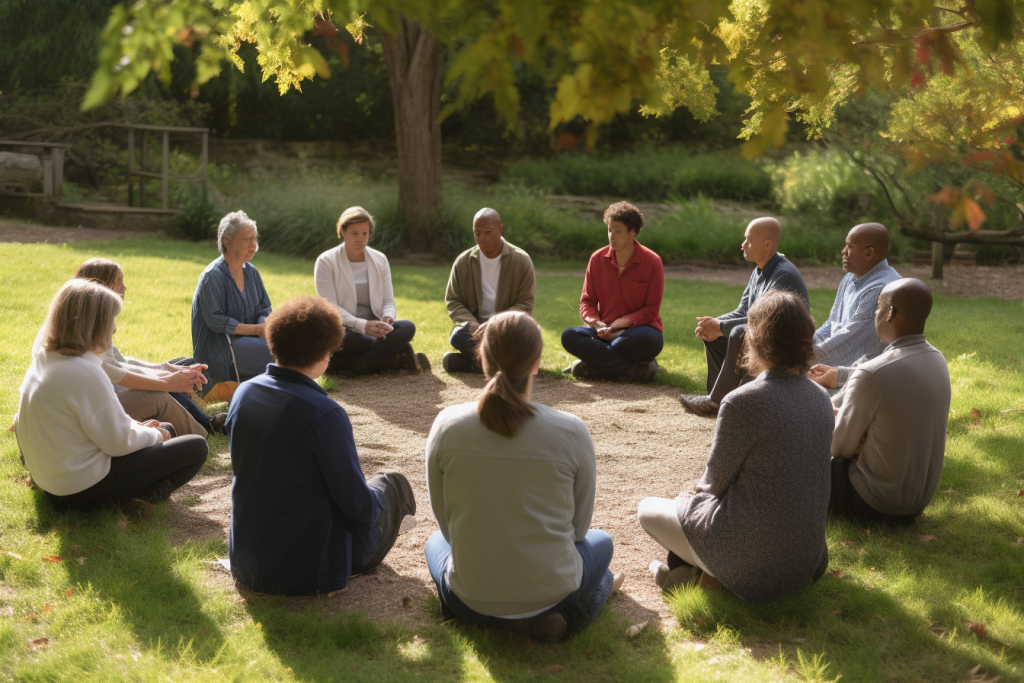As we age, we encounter numerous changes in our physical, emotional, and psychological well-being. These changes can range from the loss of loved ones, physical limitations, and memory impairment. Mindfulness is a technique that can help us navigate through these changes in a more graceful and peaceful manner. In this article, we will explore the relationship between mindfulness and aging and how it can help us navigate life’s changes.

How mindfulness can help with aging
Aging comes with numerous physical and psychological changes. Chronic pain, mobility issues, and memory loss are just a few of the challenges older adults face. Mindfulness can help older adults cope with these changes and improve their quality of life.
One of the main benefits of mindfulness for aging adults is stress reduction. As we age, we may encounter more stressors, such as health issues, retirement, and loss of independence. Mindfulness techniques can help older adults manage their stress and improve their emotional well-being. Studies have shown that mindfulness meditation can reduce cortisol levels, a hormone associated with stress, and increase the activity of the prefrontal cortex, which is responsible for emotional regulation.
Mindfulness can also improve cognitive function in aging adults. As we age, we may experience cognitive decline, including memory impairment and difficulty with decision-making. However, mindfulness meditation has been shown to improve attention, memory, and cognitive flexibility in older adults. One study found that older adults who participated in an eight-week mindfulness-based stress reduction program showed improvement in executive function and attention.
Furthermore, mindfulness can help older adults manage chronic pain. Chronic pain is a common condition among older adults and can negatively impact their quality of life. Mindfulness meditation has been shown to reduce pain intensity and improve pain-related distress. One study found that older adults who participated in a mindfulness-based stress reduction program experienced a significant reduction in pain severity and interference.
In essence, mindfulness can improve social relationships in aging adults. Social isolation is a common issue among older adults and can lead to negative health outcomes, including depression and cognitive decline. Mindfulness can help older adults develop more positive relationships with others and improve their social connections. One study found that older adults who participated in a mindfulness-based stress reduction program reported greater social support and decreased feelings of loneliness.
One of the main benefits of mindfulness for aging adults is stress reduction.
How to practice mindfulness
Mindfulness can be practiced in a variety of ways, including meditation, deep breathing exercises, and yoga. Here are a few simple mindfulness techniques that older adults can incorporate into their daily lives:
- Mindful breathing: Sit or lie down in a comfortable position and focus on your breath. Take slow, deep breaths, and try to focus your attention on the sensation of your breath moving in and out of your body. If your mind wanders, gently bring your attention back to your breath.
- Body scan meditation: Lie down on a comfortable surface and focus on each part of your body, starting from your toes and moving up to your head. Notice any sensations, tension, or discomfort in each area and try to release any tension or discomfort as you exhale.
- Mindful walking: Take a walk outside and focus on your surroundings. Notice the sights, sounds, and smells around you, and try to be fully present in the moment. If your mind wanders, gently bring your attention back to your surroundings.
- Yoga: Practicing yoga can help improve flexibility, balance, and strength, as well as promote relaxation and mindfulness. Many yoga studios offer classes specifically designed for older adults, or you can find beginner yoga classes online.
- Gratitude journaling: Take a few minutes each day to write down things you are grateful for. This can help shift your focus to the positive aspects of your life and increase feelings of well-being.
Incorporating mindfulness into your daily routine can take some practice, but it can be a powerful tool for navigating life’s changes.
Tips for starting a mindfulness practice
If you’re new to mindfulness, here are some tips to help you get started:
- Start small: Don’t try to practice mindfulness for hours on end when you’re first starting out. Start with just a few minutes of meditation or deep breathing exercises each day and gradually increase the amount of time you spend practicing mindfulness.
- Be consistent: Make mindfulness a daily habit. Try to practice at the same time each day, such as first thing in the morning or before bed.
- Use guided meditations: If you’re having trouble focusing during meditation, try using a guided meditation. There are many apps and websites that offer free guided meditations for beginners.
- Be patient: It takes time and practice to develop mindfulness skills. Don’t get discouraged if you don’t see immediate results.
- Seek support: Join a mindfulness group or class, or find a meditation buddy to help you stay motivated and accountable.
Ultimately, aging can bring many changes and challenges, but mindfulness can be a powerful tool for navigating these changes. By practicing mindfulness, older adults can improve their emotional regulation, cognitive function, and overall well-being. Incorporating mindfulness techniques into daily routines can help reduce stress, manage chronic pain, and improve social relationships. If you’re new to mindfulness, start small and be patient. With practice, mindfulness can become a valuable tool for navigating life’s changes.
